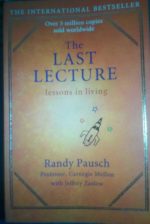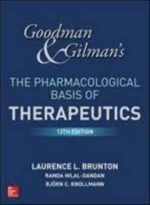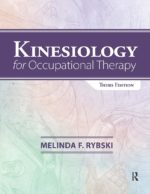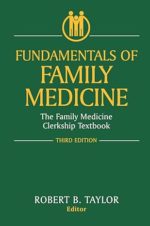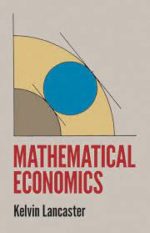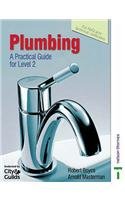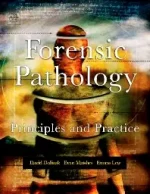-
The Last Lecture – Lessons In Living
KShs 1,095.00The Last Lecture is a New York Times best-selling book co-authored by Randy Pausch—a professor of computer science, human-computer interaction, and design at Carnegie Mellon University in Pittsburgh, Pennsylvania—and Jeffrey Zaslow of the Wall Street Journal.
-
Goodman and Gilman’s The Pharmacological Basis of Therapeutics, 13th Edition
KShs 19,028.00Goodman & Gilman’s: The Pharmacological Basis of Therapeutics, Thirteenth Edition represents the pinnacle of authority and accuracy in describing the actions and uses of therapeutic agents in relation to physiology and pathophysiology. Goodman & Gilman’s careful balance of basic science and clinical application has guided thousands of practitioners and students to a clear understanding of the drugs essential to preventing, diagnosing, and treating disease.
The Thirteenth Edition includes more than 500 color illustrations, with many new figures emphasizing mechanisms of drug action. More than 30 new contributors have added to this edition, while the focus on basic principles is undiminished.
This edition is enhanced by timely new content:
- NEW chapters including Treatment of Pulmonary Arterial Hypertension, Immunity and Inflammation, Immunoglobulins and Vaccines, and Treatment of Viral Hepatitis
- Expanded coverage of cardiovascular disease, with separate chapters on myocardial ischemia, hypertension, and heart failure
- Increased emphasis on cellular signaling pathways involved in drug action
- Summary tables at the end of each chapter that organize drugs discussed in that chapter into relevant categories and detail therapeutic usage, clinical pharmacology, and tips
- Chapter Content Outlines at the beginning of each chapter
- Abbreviation boxes in every chapter to easily identify the abbreviations appearing in that chapter
-
Kinesiology for Occupational Therapy 3rd Edition by Melinda F. Rybski (Author)
Kinesiology for Occupational Therapy, Third Edition covers the theoretical background for understanding the kinematics and kinetics of normal human physiological movement. Each specific joint is assessed in terms of musculoskeletal function, movements possible, and an overview of pathology that may develop. Dr. Melinda Rybski covers four occupational therapy theories related to functional motion that are important for occupational therapists to know. This Third Edition has been updated to reflect the current field and includes new information that has emerged in recent years.
New in the Third Edition:
Content closely follows AOTA’s Occupational Therapy Practice Framework and Occupational Therapy Vision 2025
Updated and more extensive provision of evidence that summarizes key findings in current literature
New theories are presented in the Intervention sections
Extensive, joint specific and theory-based assessments are provided
Interventions described are occupation-based, process-based
Kinesiology concepts presented in a practical, useable way
Expanded chapters for Spine and Thorax and Hip and Pelvis.
Included with the text are online supplemental materials for faculty use in the classroom.Kinesiology for Occupational Therapy, Third Edition clearly outlines the need for an understanding of kinesiology in occupational therapy, providing occupational therapists with the evidence necessary to support their intervention strategies.
-
LV3 Little Red Riding Hood
KShs 495.00Give your child the best head start with reading. Have fun learning first sounds and words together, using the traditional story of Little Red Riding Hood. Phonics is the method of learning to read that most teachers use. Children learn the sounds made by letters, or group of letters, then they blend them together to make words. With 75 stickers and lots of story-based activities children will love learning to read with this educational and engaging phonics book. This paperback book has 32 pages and measures: 28 x 21 x 0.4cm
-
Living The 7 Habits: The Courage To Change
KShs 1,300.00LIVING THE 7 HABITS is a book that could only be published now – some 10 plus years after the publication of THE 7 HABITS OF HIGHLY EFFECTIVE PEOPLE. Covey’s new book shows how the 7 habits have touched the lives of millions. The people, institutions, companies and even governments that have inco…
-
Fundamentals of Family Medicine: The Family Medicine Clerkship
Fundamentals of Family Medicine, Third Edition, describes the current approach to common problems in family practice. The book tells how family physicians provide high-quality, comprehensive, and ongoing health care for patients and families, based on current evidence and time-tested methods in clinical practice.
Clinical scenarios that include case studies and questions for group discussion reinforce the book’s clinical topics. The clinical scenarios all concern members of the Nelson family- a multigenerational extended family whose members visit the family physician with a variety of health concerns and whose dynamics evolve from chapter to chapter. The discussion questions allow the group to consider both the biomedical and psychosocial aspects of problems such as headache, obstructive airway disease, diabetes mellitus, athletic injuries, domestic violence, care of the dying patient, and the family physicians’s role in dealing with terrorist events.
The book is intended to be a reference source for the care of diseases family physicians are likely to see and as the course textbook for medical students in family medicine clerkships in medical school. This book will help health professionals provide up-to-date care for their patients, and will allow students to view clinical issues through the eyes of the family physician.
Fundamentals of Family Medicine, Third Edition, ideally is used as a companion to Family Medicine: Principles and Practice, Sixth Edition, edited by Robert B. Taylor et al.
-
Man Tiger
KShs 650.00A wry, affecting tale set in a small town on the Indonesian coast, Man Tiger tells the story of two interlinked and tormented families and of Margio, a young man ordinary in all particulars except that he conceals within himself a supernatural female white tiger. The inequities and betrayals of family life coalesce around and torment this magical being. An explosive act of violence follows, and its mysterious cause is unraveled as events progress toward a heartbreaking revelation.
Lyrical and bawdy, experimental and political, this extraordinary novel announces the arrival of a powerful new voice on the global literary stage.
-
Mathematical Economics (Dover Books on Computer Science)
KShs 2,240.00“An excellent book which should find wide use.” — Mathematics Reviews.
In this classic volume, a noted economist and teacher has combined a modern text for graduate courses in mathematical economics with a valuable reference book of analytical economics for professional economists.
Unique in its unified and careful presentation of a variety of techniques of economic analysis, the book is divided into two parts: chapters on mathematical economics (i.e. economic models analyzed primarily from the point of view of their mathematical properties) and appropriate mathematical reviews. To keep the exposition as smooth as possible, the economic analysis has been separated from the purely mathematical material — permitting flexible use of the book as a text. Moreover, the chapters and reviews are designed as a self- contained system, wherein the reviews contain all the mathematics required for the chapters and the chapters illustrate the use of almost all the techniques set out in the reviews. An extensive mathematical background is not required; however, it is assumed the reader has some acquaintance with elementary calculus.
The economic analysis covers linear and nonlinear optimizing techniques, input-output, activity analysis, neoclassical and set- theoretic static economic models, modern general equilibrium theory, the Von Neumann and other models of balanced growth, efficient growth and turnpike theorems, and modern stability analysis.
The mathematical reviews include discussions of set theory, linear algebra, matrices, linear equations and inequalities, convex sets and functions, continuous functions and mappings (including neoclassical calculus methods), topological ideas, differential and difference equations, calculus of variations, and related topics.
Every attempt has been made to give a complete and rigorous exposition (except in topological methods where the approach is descriptive and heuristic) which omits no essential proofs or steps in the argument.
-
Plumbing: A Practical Guide for Level 2
Plumbing: A Practical Guide for Level 2 is an essential handbook for learners, apprentices, and trainees working towards their Level 2 plumbing qualification. Written in clear, accessible language, it covers all the key skills, knowledge, and safety practices required in modern plumbing.
This practical guide takes you step by step through fundamental topics such as pipework systems, hot and cold water supply, sanitation, central heating, and maintenance. With diagrams, worked examples, and real-world case studies, it helps build confidence in both theory and hands-on application.
Whether you’re starting your career in plumbing, refreshing your knowledge, or preparing for assessment, this book provides:
Comprehensive coverage of the Level 2 plumbing curriculum
Practical guidance on tools, techniques, and safe working practices
Clear explanations supported by illustrations and activities
Essential tips for workplace readiness and professional standards
Ideal for students, apprentices, and training centres, this is the go-to resource for mastering the skills and understanding needed to progress in the plumbing trade.
-
Forensic Pathology Principles and Practice
KShs 60,000.00Forensic Pathology is a comprehensive reference that uses a case-oriented format to address, explain and guide the reader through the varied topics encountered by forensic pathologists. Developed in response to a severe void in the literature, the book addresses topics ranging from medicolegal investigation of death to death scene investigation, forensic autopsy, and artifacts of resuscitation as well as complications of medical therapy, forensic osteology, forensic odontology, forensic photography, and death certification. The book includes various types of cases, including sudden natural death, asphyxia, motor vehicle collisions, death in custody, child abuse and elder abuse, acute psychiatric and emotional deaths, and pregnancy. It contains sample descriptions of pathological lesions which serve to aid pathologists in reporting their findings to law enforcement agencies, attorneys, and others involved in investigations of sudden death. The concepts outlined in the text are beautifully illustrated by large, colorful photographs. There are also “Do and Don’t” sections at the end of each chapter that provide guidance for handling the types of cases examined. This work will benefit not only experienced forensic pathologists, but also hospital pathologists who occasionally performs medicolegal autopsies; doctors in training; medical examiners; law enforcement personnel; crime scene investigators; attorneys; and fellows and students of the medical sciences.

